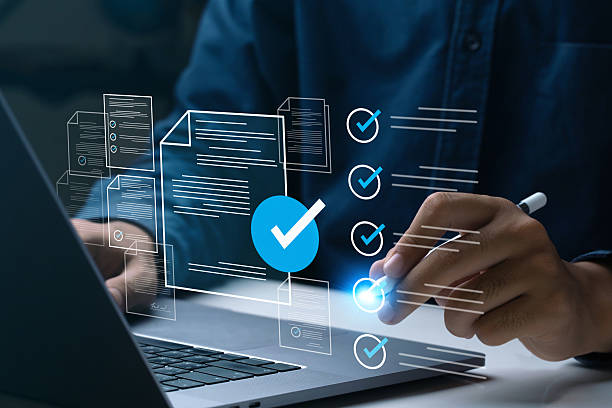What is an Artificial Intelligence Robot? Comprehensive Definition
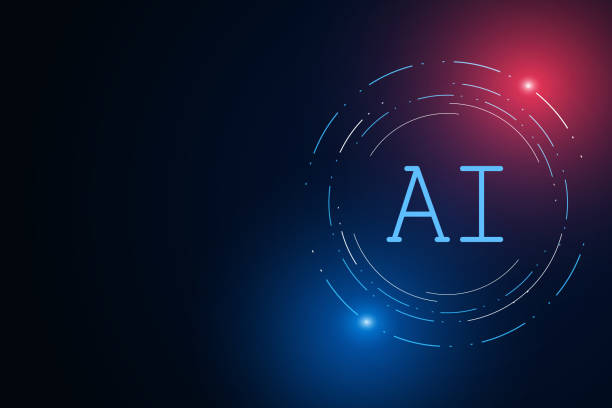
An artificial intelligence robot (#artificialintelligence robot) is a combination of two important areas of technology, namely robotics and artificial intelligence.
Simply put, an artificial intelligence robot is a machine that is able to perform tasks that usually require human intelligence using #artificial_intelligence algorithms.
These tasks can include learning, reasoning, problem-solving, natural language understanding, and even decision-making.
In other words, an artificial intelligence robot tries to simulate human behavior and abilities in a machine.
These robots can be used in various environments, including factories, hospitals, homes, and even space.
In fact, an artificial intelligence robot is a complex system consisting of sensors, processors, actuators, and artificial intelligence software.
Sensors collect information from the environment, processors process this information, artificial intelligence software executes decision-making and learning algorithms, and actuators enable the robot to move in the environment and perform its tasks.
The use of artificial intelligence robots in various industries has led to increased productivity, reduced costs, and improved quality of products and services.
Overall, an artificial intelligence robot is an emerging technology with very high potential that can play an important role in the future of our lives.
How much does losing business leads due to an unprofessional site cost you? Solve this problem forever with professional corporate website design by Rasaweb!
✅ Increase the credibility and trust of potential customers
✅ Attract new business leads more easily
⚡ Get a free consultation now!
Main Components of an Artificial Intelligence Robot
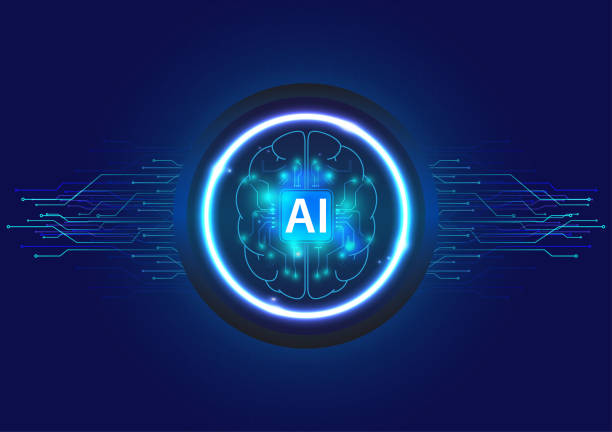
An artificial intelligence robot consists of several main components, each of which plays an important role in its overall function.
These components include:
- Sensors: Sensors collect information about the surrounding environment.
This information can include temperature, light, sound, image, and other sensory data.
Sensors help the robot to be aware of the state of the environment and make decisions based on it. - Processors: Processors process the information collected by the sensors and generate the necessary instructions for performing various tasks.
Processors are the heart of the robot and play a fundamental role in its intelligence. - Actuators: Actuators allow the robot to move and perform physical activities.
These actuators can include motors, pumps, valves, and other mechanical devices.
Actuators help the robot interact with the environment and perform its tasks effectively. - Artificial Intelligence Software: Artificial intelligence software includes machine learning algorithms, natural language processing, machine vision, and other artificial intelligence techniques.
This software allows the robot to learn, reason, make decisions, and interact with humans. - Power Source: The power source provides the energy needed for the operation of all components of the robot.
This power source can include batteries, fuel cells, or other energy sources.
These components working together enable an artificial intelligence robot to perform complex tasks automatically.
Diverse Applications of Artificial Intelligence Robots in Various Industries
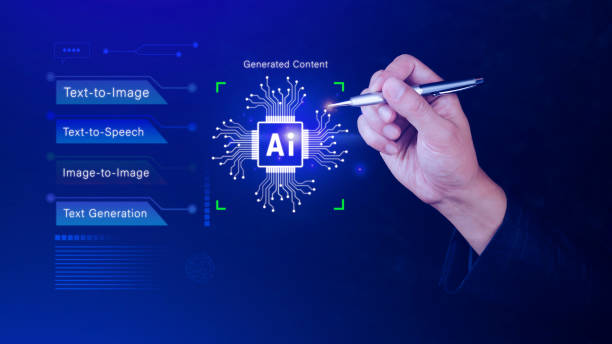
Due to its unique capabilities, the artificial intelligence robot (#AI robot) is used in various industries and plays an important role in improving performance and increasing productivity.
Some of the common applications of these robots include:
- Manufacturing Industry: Artificial intelligence robots are used in production lines to perform repetitive and dangerous tasks, such as welding, painting, packaging, and assembly of parts.
These robots can work continuously and with high accuracy and reduce human errors. - Healthcare: Surgical robots, rehabilitation robots, and nursing robots are examples of the application of artificial intelligence robots in this field.
These robots can play an effective role in performing complex surgeries, helping patients recover motor skills, and providing primary care to patients. - Customer Service: Chatbots and customer service robots, using natural language processing, answer customer questions and solve their problems.
These robots can be available 24 hours a day, 7 days a week, and reduce employee workload. - Agriculture: Artificial intelligence robots are used in agriculture to perform tasks such as harvesting, spraying, irrigation, and monitoring plant health.
These robots can help farmers increase the productivity of their farms and reduce water and pesticide consumption. - Finance: The use of #artificial_intelligence_robots in this industry greatly helps to improve performance and also reduce errors.
These are just a few examples of the widespread applications of artificial intelligence robots in various industries.
With the advancement of technology, it is expected that these robots will play a more important role in our lives.
| Industry | Application | Benefits |
|---|---|---|
| Manufacturing | Welding, painting, assembly | Increased accuracy, reduced errors, increased speed |
| Healthcare | Surgery, rehabilitation, nursing | Reduced risk, increased accuracy, accelerated recovery |
| Customer Service | Answering questions, solving problems | 24/7 availability, reduced workload, improved customer satisfaction |
Advantages of Using Artificial Intelligence Robots
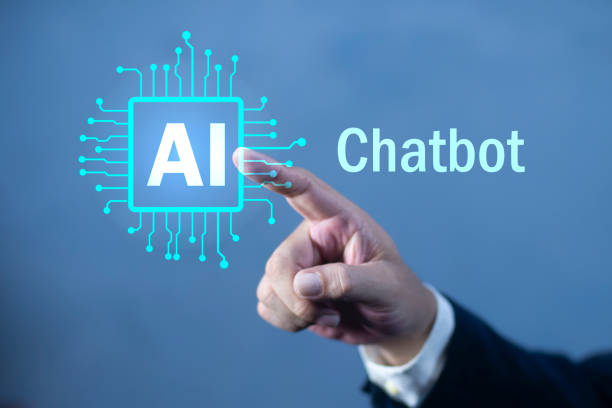
The use of artificial intelligence robots has numerous advantages that can help improve performance, increase productivity, and reduce costs in various industries.
Some of these advantages include:
- Increased Accuracy and Reduced Errors: Artificial intelligence robots can perform their tasks with very high accuracy and minimize human errors.
This is especially important in industries that require high accuracy and precision, such as the medical and aerospace industries. - Increased Speed and Productivity: Artificial intelligence robots can work continuously and without fatigue, and significantly increase the speed of performing tasks.
This leads to increased productivity and reduced production time. - Reduced Costs: The use of artificial intelligence robots can reduce the costs of manpower, raw materials, and energy.
This is especially important in industries that require a large workforce and high operating costs. - Improved Safety: Artificial intelligence robots can perform dangerous and harmful tasks instead of humans and prevent accidents and potential injuries.
This is especially important in industries such as mining, construction, and firefighting. - Access to Information and Data Analysis: #Artificial_intelligence_robots can access a large amount of information and, using artificial intelligence algorithms, analyze this information and identify important patterns and trends.
This can help organizations make better decisions and improve their performance.
In short, artificial intelligence robots can help organizations become more efficient, more profitable, and safer.
Did you know that 94% of first impressions of a company are related to its website design?
Rasaweb helps you create the best first impression by providing professional corporate website design services.
✅ Create a professional and reliable image of your brand
✅ Attract potential customers more easily and improve online presence
⚡ Get a free corporate website design consultation
Challenges Facing the Development and Implementation of Artificial Intelligence Robots
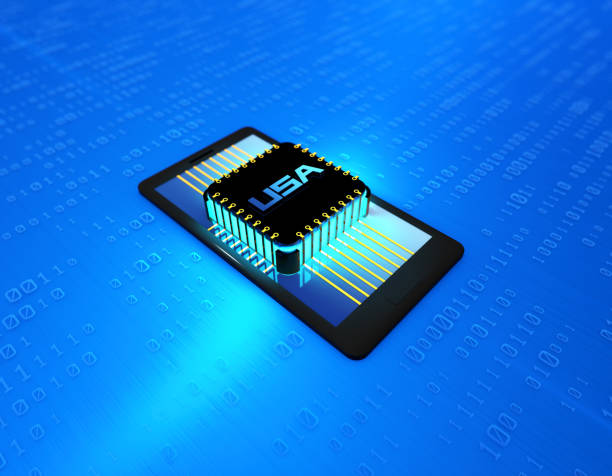
Despite its many advantages, the development and implementation of artificial intelligence robots also comes with challenges.
Some of these challenges include:
- High Costs: Designing, building, and implementing artificial intelligence robots can be costly.
These costs include research and development costs, equipment purchases, personnel training, and robot maintenance. - Technical Complexity: Artificial intelligence robots are complex systems consisting of various components.
Designing, building, and maintaining this system requires high expertise and skill. - Ethical Issues: The use of artificial intelligence robots can raise various ethical issues, such as the issue of job loss, the issue of privacy, and the issue of accountability.
- Technical Limitations: Artificial intelligence robots still have limitations in some areas.
For example, robots still cannot fully understand human emotions and, in some situations, make wrong decisions. - Social Acceptance: The acceptance of artificial intelligence robots in society may face resistance.
Some people may be afraid of robots or worried about them replacing human labor.
To overcome these challenges, there is a need to invest in research and development, train skilled personnel, develop ethical standards, and create public awareness about the benefits and limitations of artificial intelligence robots.
What Does the Future Hold for Artificial Intelligence Robots?
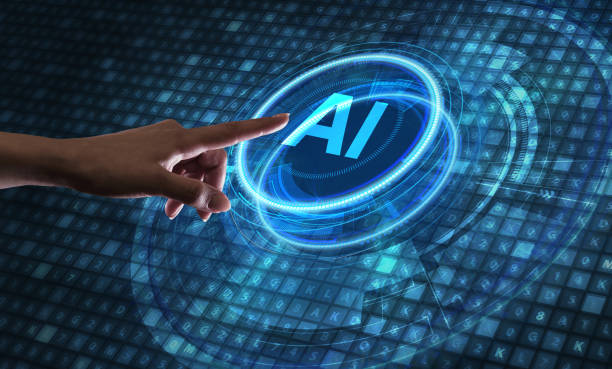
The future of artificial intelligence robots (#artificial intelligence robot) is very bright and full of potential.
With the advancement of technology, robots are expected to become smarter, more efficient, and more versatile.
Some of the important trends that we will witness in the future of artificial intelligence robots include:
- Increased Use of Deep Learning: Deep learning allows robots to learn from a large amount of data and identify complex patterns and trends.
This leads to improved robot performance in various fields, such as machine vision, natural language processing, and decision-making. - Development of Interactive Robots: Interactive robots will be able to interact with humans more naturally and effectively.
These robots can play an important role in various fields, such as education, healthcare, and customer service. - Expanding the Use of Autonomous Robots: Autonomous robots will be able to move and perform their tasks in different environments without the need for human intervention.
These robots can be used in various fields, such as transportation, agriculture, and security. - Development of Collaborative Robots: Collaborative robots will be able to work alongside humans and perform tasks that are difficult or dangerous for humans.
These robots can play an important role in various fields, such as the manufacturing industry, construction, and logistics.
Overall, the future of artificial intelligence robots is a future in which robots play an important role in our lives and help us do our jobs more efficiently, safely, and easily.
The Difference Between Traditional Robots and Artificial Intelligence Robots
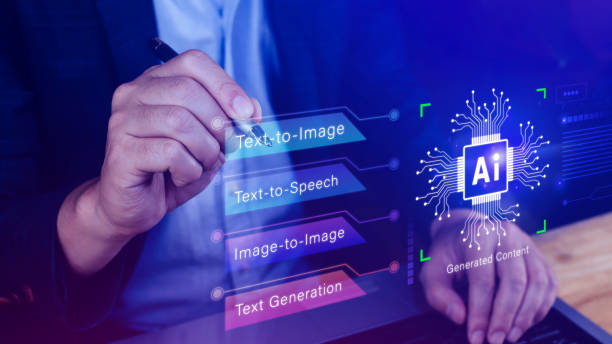
The main difference between traditional robots and artificial intelligence robots is in their level of intelligence and capabilities.
Traditional robots are usually programmed to perform a series of specific tasks repeatedly.
They cannot learn, make decisions, or adapt to unexpected situations.
In contrast, an artificial intelligence robot (#artificial intelligence robot) is able to learn, reason, make decisions, and adapt to new conditions using artificial intelligence algorithms.
These robots can perform tasks that require human intelligence.
In other words, traditional robots are more like automatic machines, while artificial intelligence robots are more like humans.
Traditional robots are suitable for performing simple and repetitive tasks, while artificial intelligence robots are suitable for performing complex and unpredictable tasks.
For example, a welding robot on a production line is a traditional robot.
This robot is programmed to perform a specific welding pattern repeatedly.
In contrast, a surgical robot that is able to perform complex surgeries using machine vision and deep learning is an artificial intelligence robot.
In short, the main difference between traditional robots and artificial intelligence robots is in their level of intelligence and capabilities.
#Artificial_intelligence_robots are capable of learning, reasoning, and making decisions, while traditional robots can only perform pre-determined tasks.
| Feature | Traditional Robot | Artificial Intelligence Robot |
|---|---|---|
| Intelligence | Limited | High |
| Learning Ability | No | Yes |
| Decision-Making Ability | No | Yes |
| Adaptability | No | Yes |
| Application | Simple and repetitive tasks | Complex and unpredictable tasks |
Important Points in Selecting and Implementing Artificial Intelligence Robots
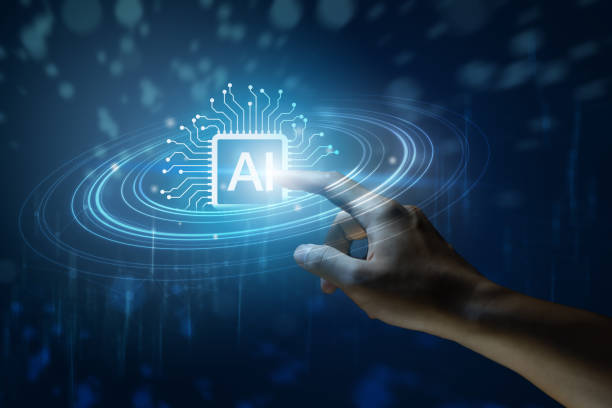
Selecting and implementing artificial intelligence robots is a complex process that requires careful planning and precision.
To ensure success in this process, the following points should be considered:
- Define Needs and Objectives: First of all, you need to accurately define your needs and objectives.
What tasks do you want the robot to perform? What results do you expect? By specifying your needs and objectives, you can choose the appropriate robot. - Choose the Right Robot: There are different robots with different capabilities and prices on the market.
You should choose a robot that is compatible with your needs and budget. - Careful Planning: Before implementing the robot, you should do careful planning.
This planning should include the different stages of implementation, resource allocation, personnel training, and performance evaluation. - Personnel Training: Your personnel should receive the necessary training to work with the robot.
This training should include how to work with the robot, how to maintain the robot, and how to troubleshoot potential problems. - Performance Evaluation: After implementing the robot, you should evaluate its performance regularly.
This evaluation should include reviewing productivity, error rate, and user satisfaction.
By following these tips, you can successfully select and implement an artificial intelligence robot and benefit from its advantages.
Tired of losing business opportunities due to not having a professional corporate website? Don’t worry anymore! With Rasaweb’s corporate website design services:
✅ The credibility and professionalism of your brand increases.
✅ You attract more customers and sales leads.
⚡ Get a free consultation to get started now!
The Impact of Artificial Intelligence Robots on the Labor Market
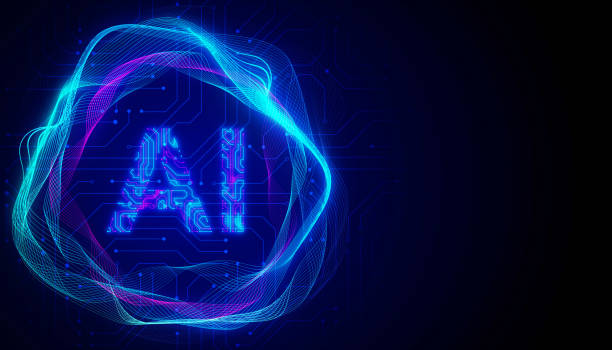
The impact of artificial intelligence robots (#AI robot) on the labor market is a controversial topic.
Some people are worried that robots will cause job losses, while others believe that robots will create new job opportunities.
The reality is that the impact of artificial intelligence robots on the labor market is complex and depends on various factors.
On the one hand, robots can perform tasks that were previously performed by humans.
This can lead to job losses in some industries, such as the manufacturing and transportation industries.
On the other hand, robots can perform tasks that are difficult or dangerous for humans.
This can lead to the creation of new jobs in some industries, such as the healthcare and agriculture industries.
Also, robots can help economic growth by increasing productivity and reducing costs.
This can lead to the creation of new jobs in all industries.
Overall, artificial intelligence robots are expected to cause changes in the labor market.
Some jobs will disappear, some jobs will change, and new jobs will be created.
In order for people to be successful in this new environment, they need to learn new skills and adapt to change.
These skills include technical skills, problem-solving skills, critical thinking skills, and communication skills.
In this way, the future of work can be easily managed with artificial intelligence robots.
Are Artificial Intelligence Robots a Threat to Humanity?

The question of whether artificial intelligence robots (#artificial intelligence robot) are a threat to humanity is one of the most important and controversial questions in the field of artificial intelligence.
Some people are worried that robots will become smarter than humans and lose control and harm humanity.
While others believe that these concerns are unfounded and that robots will always be under human control.
#Artificial_intelligence_robots have always been with humans and will continue to be.
The reality is that the answer to this question is not easy and depends on various factors.
On the one hand, artificial intelligence has a lot of potential to help humanity.
Robots can perform tasks that are difficult or dangerous for humans, help us cure diseases, protect the environment, and solve complex problems.
On the other hand, artificial intelligence can be potentially dangerous.
If robots are turned into weapons or lose control, they can harm humanity.
To prevent these risks, we must take the necessary precautions.
We need to develop ethical standards for the development and use of artificial intelligence, ensure the security of artificial intelligence systems, and monitor the development of artificial intelligence.
We also need to raise public awareness about the benefits and risks of artificial intelligence so that people can make informed decisions about the use of this technology.
Ultimately, whether artificial intelligence robots are a threat to humanity or not depends on us.
If we use this technology with caution and responsibility, we can benefit from its advantages and avoid its risks.
Frequently Asked Questions
| Question | Answer |
|---|---|
| What is an artificial intelligence robot? | It is a robot that uses artificial intelligence capabilities to understand the environment, reason, learn, and make decisions to perform complex tasks independently. |
| What is the main difference between a regular robot and an artificial intelligence robot? | Artificial intelligence robots can learn and adapt to their environment, while regular robots usually operate based on fixed and pre-determined plans. |
| In what areas are artificial intelligence robots used? | In areas such as industry (production lines), medicine (robotic surgeries), services (customer support, smart vacuum cleaners), exploration (space and underwater), and entertainment. |
| How do artificial intelligence robots learn? | They acquire new skills through machine learning and deep learning algorithms by analyzing large data and identifying patterns. |
| Can artificial intelligence robots have emotions? | Currently, no. They can recognize or simulate emotions, but they do not have a real experience of emotions like humans. |
| What are the most important benefits of using artificial intelligence robots? | Increased productivity, reduced human error, performing dangerous or repetitive tasks, and providing innovative and efficient services. |
| What challenges are there in developing artificial intelligence robots? | The need for abundant and high-quality data, the complexity of algorithms, ethical issues, cybersecurity, and the high cost of research and development. |
| Are artificial intelligence robots dangerous to humans? | No, by observing safe design principles and ethical regulations. Concerns are more related to social and economic impacts such as changes in the labor market. |
| What is an example of an artificial intelligence robot in everyday life? | Smart vacuum cleaner robots (like Roomba) that automatically map and clean the house, or smart voice assistants (like Siri and Alexa). |
| How is the future of artificial intelligence robots predicted? | They are expected to become smarter, more autonomous, and capable of more complex interactions with humans, and to play a more prominent role in industry, medicine, transportation, and daily life. |
And other services of Rasa Web Advertising Agency in the field of advertising
Intelligent Advertising Campaign: A dedicated service for growth and improved SEO ranking based on precise audience targeting.
Intelligent Link Building: A professional solution for digital branding with a focus on precise audience targeting.
Intelligent Digital Advertising: A combination of creativity and technology for user interaction through marketing automation.
Intelligent Marketplace: Transform sales with the help of customizing the user experience.
Intelligent Advertising Campaign: A quick and efficient solution for attracting customers with a focus on managing Google Ads.
And over a hundred other services in the field of internet advertising, advertising consulting and organizational solutions
Internet Advertising | Advertising Strategy | Advertorial Report
Resources
Intelligent Robot on Virgool Website
,What is an Intelligent Robot?
,Everything About Artificial Intelligence Chatbots
,Intelligent Robot; What Do You Know About Its Capabilities and Risks
? Are you ready to transform your business in the digital world? Rasaweb Afarin, a leading digital marketing agency, with expertise in digital marketing and WordPress website design, offers comprehensive solutions for your growth, visibility, and sustainable success. With us, experience a powerful presence in the online space.
📍 Tehran, Mirdamad Street, next to the Central Bank, South Kazerun Alley, Ramin Alley No. 6
“`


